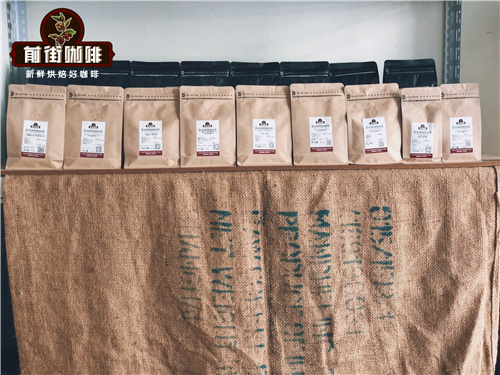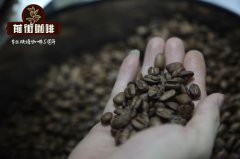Introduction of Brazilian coffee beans description of taste and flavor of different treatments of Brazilian coffee beans

Professional coffee knowledge exchange more coffee bean information please follow the coffee workshop (Wechat official account cafe_style)
Because Brazil is located in the tropical rain forest area, the terrain is relatively flat and there are few high-altitude mountain forests, most coffee is grown in low-altitude non-volcanic soil areas, and there is not too much shade for shading. as a result, Brazilian beans grow fast, but the density and soft flavor of coffee does not change much, coupled with the large-scale harvesting of coffee beans with large-scale harvesting machines and coffee with great differences in maturity. As a result, the quality of Brazilian beans is not particularly outstanding and has always stayed in the category of commercial beans.
"extremely warm and smooth, the entrance is sweet and pure, and there is no thankless acrid and astringent taste in the aftertaste. It does not feel as thin as water and is quite thick." Is the definition of Brazilian coffee beans by the Brazilian Fine Coffee Association. Beans from Coocafe, a Brazilian fair trade cooperative, have high sweetness, smooth entrance and do not bite the tongue. It is recommended to friends who prefer not to like sour taste.
Flavor: Brazilian coffee beans are mild and mellow, tasting individually or mixing with other coffee beans are excellent choices.
Baking degree: medium and deep baking
Try to match it with snacks: Strawberry Cake
Most Brazilian coffee is treated by natural sun or semi-washing, while the most commonly used is natural sun ("natural sun" means that coffee is fully absorbed by sunlight on the branches and picked after it is fully ripe).
Half-sun, the Brazilian coffee fields are endless, most of them are harvested mechanically, in order to meet the economic benefits. When 75% of the coffee fruit in the coffee garden turns red, mechanical harvesting is started, followed by the same pre-washing operation, which is moved into the sink to remove floating beans, sift out the sunken beans, and then use a large pulp screening machine to dig out the pulp and remove the pectin-covered pods. The next stage is separate from the washing method: the sticky pods do not need to be moved into the tank to ferment, but to the outdoor bean drying farm. Because of the dry climate in Brazil, the sticky pectin on the pods will harden in about a day or so. Then use a large number of manpower to turn up and down, so that the pods dry evenly inside and outside, so as not to return to moisture and stink. For about two to three days, with the help of the natural forces of sunlight and dry climate, the pods can achieve a certain degree of dehydration. After further drying in a dryer, the water content is reduced to 10.5%, and the pods are stored in a special container for about 10 days for further ripening, so that the quality is stable. Before export, the sheepskin shavings (pods) are worn off, coffee beans are taken out, and packaged by grades.
Complete washing method (Washed)
Natural washing (Pulped Natural)
This method is extremely common in Brazil. The natural washing method is very similar to the water washing method, except that the natural washing method uses a high-pressure washing machine to remove the mucous membrane of the coffee surface, thus skipping the fermentation process. Several raw coffee processing companies in Brazil and Colombia have patented this method and have become local natural water system processing monopolies. The water consumption of this method is much lower than that of water washing, so some people are used to calling it "semi-drying (Semi-Dry)". Since coffee beans are not fermented, there is no (or only very low) fermentation risk, and the overall quality of Brazilian coffee beans is more constant. Unfortunately, the taste of Brazilian coffee beans tends to be flat because they are not fermented.
Semi-washing method
Semi-washing method: first remove the skin with water, and then go to the sun. This is a relatively new and rare method. This method is only suitable for specific areas of some countries, with a long drying period. Therefore, the coffee produced by this semi-washing method contains the characteristics of both washing and drying. The acidity, sweetness, seasoning, and flavor of the coffee are quite good; the disadvantage is that the coffee taste is not as strong as that produced by pure drying or washing.
Important Notice :
前街咖啡 FrontStreet Coffee has moved to new addredd:
FrontStreet Coffee Address: 315,Donghua East Road,GuangZhou
Tel:020 38364473
- Prev

It is also a rosy summer, what is the difference between the blue mark and the green mark of the Panamanian jadeite manor?
It is also the summer of roses in the sun. What is the difference between the red and green signs of Jensen Manor and Emerald Manor? [location] Jensen Manor: located in the Volcan Walken region, surrounded by mountains, the average annual rainfall is less than that of Boquete Poquet, and because it is located to the west of the Baru volcano, it will have a stronger dried fruit flavor and sweetness than the Boquete region. The average altitude is about
- Next

The characteristics of Brazilian coffee beans what is the roasting degree of Brazilian coffee beans? Brazilian coffee bean treatment
Professional coffee knowledge exchange more coffee bean information please follow the coffee workshop (Wechat official account cafe_style) Brazilian coffee characteristics of Brazilian coffee generally refers to the coffee produced in Brazil. There is a wide variety of Brazilian coffee, the vast majority of which are unwashed and sun-dried, classified according to the name of the state of origin and the port of transport. Brazil has 27 states and 17 states produce coffee, but its
Related
- Detailed explanation of Jadeite planting Land in Panamanian Jadeite Manor introduction to the grading system of Jadeite competitive bidding, Red bid, Green bid and Rose Summer
- Story of Coffee planting in Brenka region of Costa Rica Stonehenge Manor anaerobic heavy honey treatment of flavor mouth
- What's on the barrel of Blue Mountain Coffee beans?
- Can American coffee also pull flowers? How to use hot American style to pull out a good-looking pattern?
- Can you make a cold extract with coffee beans? What is the right proportion for cold-extracted coffee formula?
- Indonesian PWN Gold Mandrine Coffee Origin Features Flavor How to Chong? Mandolin coffee is American.
- A brief introduction to the flavor characteristics of Brazilian yellow bourbon coffee beans
- What is the effect of different water quality on the flavor of cold-extracted coffee? What kind of water is best for brewing coffee?
- Why do you think of Rose Summer whenever you mention Panamanian coffee?
- Introduction to the characteristics of authentic blue mountain coffee bean producing areas? What is the CIB Coffee Authority in Jamaica?

